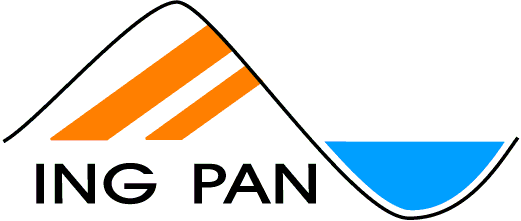Institute of Geological Sciences, PAS

Name: Institute of Geological Sciences, PAS
Address: ul. Twarda 51/55, 00-818 Warsaw, Poland
Website: http://www.ing.pan.pl/en/
Description:
For over 60 years, the Institute of Geological Sciences, Polish Academy of Science (IGS PAS), has been bringing together talented, passionate and enthusiastic people motivated to delivering cutting-edge research in Earth Sciences. Our work is dedicated to understanding the structure and evolution of the Earth’s lithosphere and its environmental implications. The institute’s research programme is multidisciplinary spanning tectonics, structural geology, exploration geophysics, basin analysis, sedimentology, igneous and metamorphic petrology, geochemistry, geochronology, isotope geology, clay mineralogy, paleoclimatology, paleobiology and paleoenvironmental studies. We use this knowledge to deepen understanding of Earth systems and the evolution of other planets. Our ultimate goal is to support sustainable development of modern society and contribute to solving today’s global challenges.
Our team of over 50 scientists is organised in 9 research groups, covering distinct aspects of our interests, that are spread among 3 research centres based in Warsaw, Krakow, and Wroclaw. We maintain a diverse network of collaborations within the Polish Academy of Sciences, Polish Earth Sciences Community and at international level. Our staff members participate in international research collaborations, co-organise and contribute to international meetings and belong to national panels and committees responsible for research strategy and policy. We have extensive links with industry, especially major Polish oil and gas companies. As a co-founder of the Earth and Planetary Research Centre (GeoPlanet), we established interdisciplinary doctoral studies for outstanding graduates, who desire to pursue their career in Earth sciences.
Disciplines: Earth and environmental sciences
Fields of activity:
- Geophysics, basin analysis, structural geology and tectonics – seismic interpretation, potential field geophysics, structural analysis of convergent and extensional settings, petroleum exploration, geophysical numerical modelling, sedimentology and provenance studies, sequence stratigraphy;
- Geochronology and Isotope Geochemistry – timing and rates of magmatic and tectonic processes, sedimentary record of orogenic processes, paleoecology, archaeological tracing and nuclear pollution;
- Petrogenetic processes in minerals – geochemistry of magmatic and metamorphic processes, isotope geochemistry, geothermobarometry, micro- to nanoscale investigations of accessory minerals, experimental mineralogy, mineralogy and geochemistry of coal-fire zones, field analysis of complex gas mixtures, reconstructions of tectonometamorphic processes, surfaces of extraterrestrial bodies and impact craters;
- Clay mineralogy – structural, quantitative and qualitative analysis of rocks and soils containing clay minerals, potential of high pressure methane adsorption in shale and coal samples, K-Ar geochronology of rocks and silicate minerals, investigating thermal transformations of minerals and molecular modelling;
- Biogeosystem modelling – investigations of natural multiscale processes occurring at the interface of the biosphere and geosphere with a special focus on marine paleo/environments, multiscale approach to reconstructing the past and predicting future ecosystem changes, application of novel and classical methods as in fossilio, in vivo and in silico approaches, use of microfossil remains of Dinoflagellata and Foraminifera for biostratigraphy and paleoenvironmental reconstructions;
- Quaternary geology and isotopic paleoecology – geochemical and stable isotope analysis of fossil bones, sedimentological studies to track paleoecology and taphonomic processes;
- U-series dating of quaternary deposits – paleoenvironmental reconstructions based on speleothem records, assessment of environmental pollution with radioactive isotopes, studying transport and deposition of natural and artificial radioactive isotopes, dating lake sediments using the 210Pb and 137Cs methods, investigating 3H activity in the natural environment, using isotope studies to model geochemical processes;
- Paleoclimate and environment – reconstructions of Quaternary environmental changes evoked by natural factors and human activity, multi‑proxy analyses of lake, peat bog and cave sediments, using the biological (pollen, diatoms, cladocerans, vertebrates, macrofossils) and geochemical (organic matter, stable isotope) methods, as well as, archaeological data.
Latest achievements:
- During the period of last 5 years (2015-2020), the Institute hosted more than 90 foreign scientists visiting our research groups and labs due to ongoing collaborations, workshops, seminars and scholarships.
- Between 2015 and 2020, the Institute obtained more than 30 externally funded projects from National Science Centre (NCN), National Centre for Research and Development (NCBiR) and the Polish petroleum industry (PGNiG, Lotos).
- Over the last 20 years (2000-2020), IGS PAS has awarded a PhD title to 54 outstanding researchers in recognition of their academic performance.
- Since 2016, the Institute staff members have authored or co-authored more than 270 peer-reviewed publications in journals from the Impact Factor List. Many of them were published in leading professional periodicals for Earth sciences.
Research facilities:
- Geochronology and Isotope Geochemistry Laboratory – ultra-pure chemistry lab, mass spectrometry (bifocal multicollector mass spectrometer with inductively excited plasma, MC ICPMS, Neptune by Thermoelectron Finningan), laser ablation (193 nm excimer laser from Resonetics connected to the Thermoelectron ICPMS XSeriesII quadrupole mass spectrometer), fission track analysis lab (equipped with a Nikon Eclipse E 600 optical microscope).
- Clay Minerals Laboratory – chemical and clay minerals separation lab, X-Ray diffraction (XRD), noble gases laboratory (K-Ar), laboratory for infrared spectroscopy (IR) and TA instruments Discovery thermogravimetric analyser coupled to a quadrupole mass spectrometer (TG-MS), laboratory for multi-gas (H2, N2, CH4, CO2) supercritical, high-pressure adsorption measurements using a Rubotherm IsoSORP® gravimetric sorption analyzer, computation cluster.
- Stable Isotope Laboratory – IRMS Finnigan Delta Plus, Kiel IV Carbonate Device, IRMS Thermo Delta V Advantage, Flash EA 1112 HT, IRMS Thermo MAT 253, GasBench II, GC IsoLink + Trace GC ultra.
- Uranium-Series Laboratory – LA-ICP-MS, Alpha Spectrometer, Liquid Scintillation spectrometer, Gamma Spectrometer, Vario MicroCUBE elemental analyser, equipment for sampling lake sediments.
- Sample Preparation Laboratory – minerals separation, fossil remains separation, preparation of various types of thin sections.
Contact person:
Professor Stanisław Mazur
Deputy Director for Research
s.mazur@ingpan.krakow.pl
(+48 12) 3705 230
